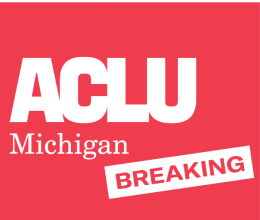
Near the end of March, legislators and the governor of North Carolina jammed through the now infamous HB2 “bathroom bill” mandating that transgender people use only those restrooms that match their assigned sex at birth. Immediately, there was uproar from business, LGBTQ advocates, constitutional law scholars and everyday ordinary people, who saw through the ridiculous idea that transgender people are somehow dangerous and need to be swept into segregated spaces.
Much has been written about how horrible the fear-based narrative surrounding this measure is and what we need to learn as advocates to battle similar types of legislative attacks popping up across the country. Unfortunately, despite all the great minds talking about how to push back against the clearly false portrayal of transgender people, we haven’t yet found a “magic formula”—except, of course, to meet and talk with a transgender person.
The root of the problem to launching an effective counter-narrative is that the anti-trans arguments are easily made by invoking fear of us, and once that fear has taken hold in a person’s brain, it’s incredibly difficult to dislodge.
If that sounds depressing, I understand why—but it’s also important to broaden your perspective and take a look at similar battles in the past. Can they help plot the path toward transgender equality? Certainly. It’s not like we haven’t played this game before. Even a casual student of political and social history will immediately recognize the ploys used by those who would stymie progress. Traces of the tactics used against women’s suffrage, desegregation, the Equal Rights Amendment and gay rights are all evident in the fight for dignity and respect for transgender people.
In all of these struggles, the groups seeking equal treatment under the law and in society were, like trans people, “othered” too. Women, for instance, were painted first as not being intelligent enough to have the vote, then as threats to the status quo. Ironically, one of the tropes used against ratification of the Equal Rights Amendment was that it would lead to “bathroom chaos” – suddenly women would demand to stand up to pee next to men in the public restroom and if that social norm broke down, think of the horrors that would follow! Lesbians! (Next thing you know, we’d need to pay women equally for the same work).
As the struggle for desegregation ramped up, the white majority in the south claimed that desegregating bathrooms would lead to sexual assault of white women and children by black men, often depicted as ravenous monsters. Frightened masses were warned that white women would “catch” diseases “carried” by black women if they were allowed to use the same toilets. Sound familiar?
Equally pernicious was the talking points war against gay men in the '70s and '80s. The American public was told that gay men “recruited” young boys to their “lifestyle.” It was obvious to anyone that they couldn’t be trusted as teachers. As the AIDS epidemic unfolded in the 1980s, gay men became the latest “other” you would catch diseases from – and this time it was a fatal illness.
Religious leaders cried that HIV/AIDS was divine retribution on “the gays” for their perversions. As a result, many thousands of men died as education and funding to fight the illness was held up, in some cases because those who held the purse strings believed that gay men deserved their fate. Gays were the “other” that you needed to despise.
Yes, structural and institutional racism and sexism persist. Anti-gay and lesbian hatred has reignited as backlash against the Supreme Court ruling on marriage equality. But on the salient points, these battles have been waged and substantively won.
Not long ago, we saw a major sports media figure fired after posting a terrible anti-transgender meme via social media. To my recollection, this is the first time a major media figure has been held accountable for anti-trans rhetoric and it may signal a turning point in the bigger battle for equality.
Like racist and sexist rhetoric, trans-bashing is no longer OK in popular culture. This and the pervasive nature of the national conversation about transgender people have me convinced that we stand at a precipitous moment for the transgender community. It is my belief that this battle too is on the verge of being won.

